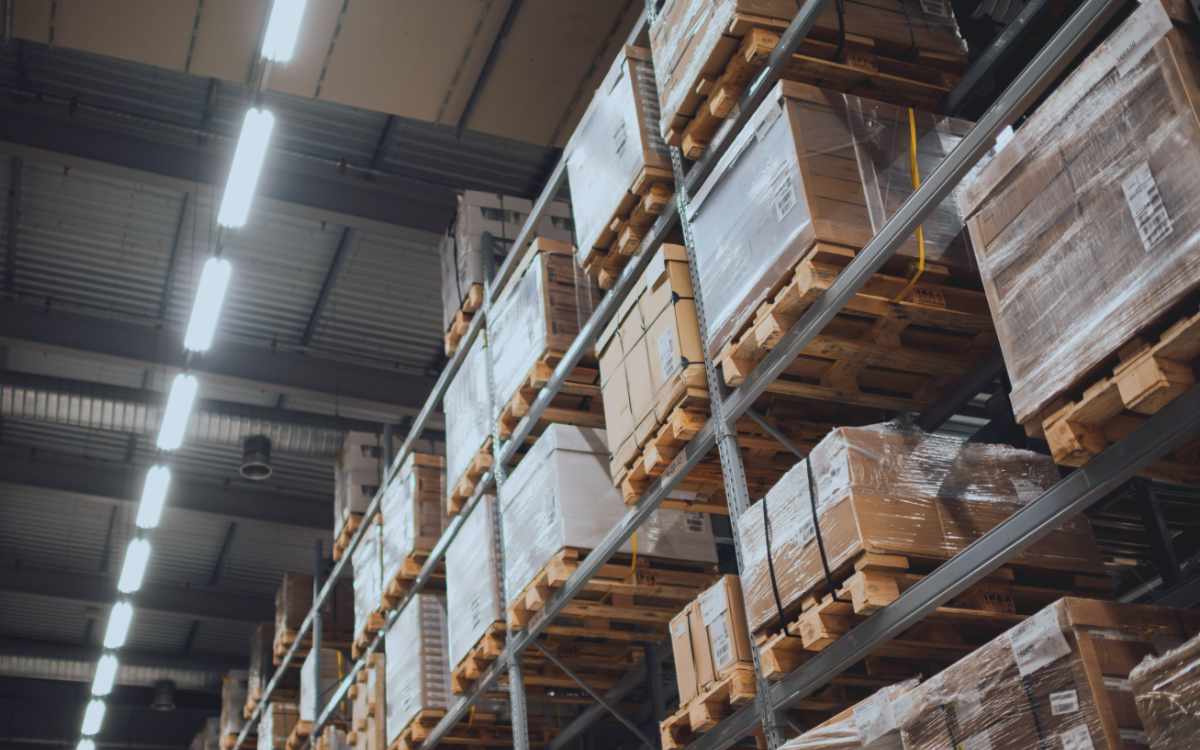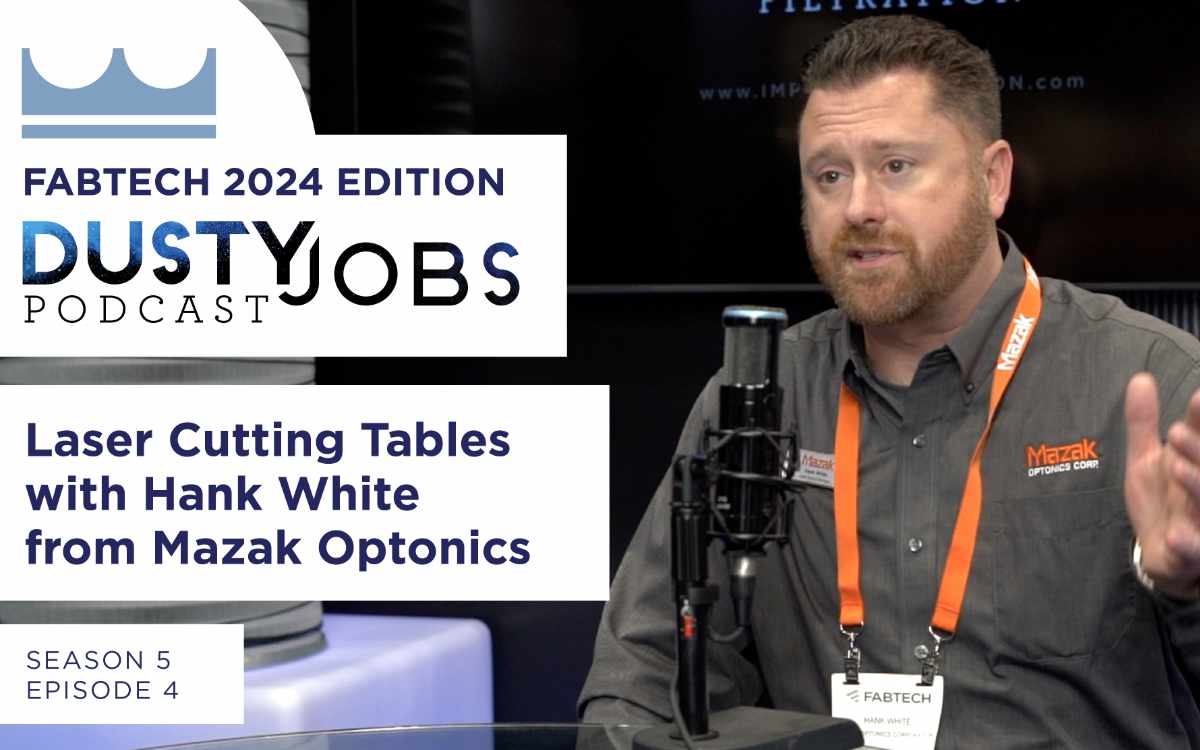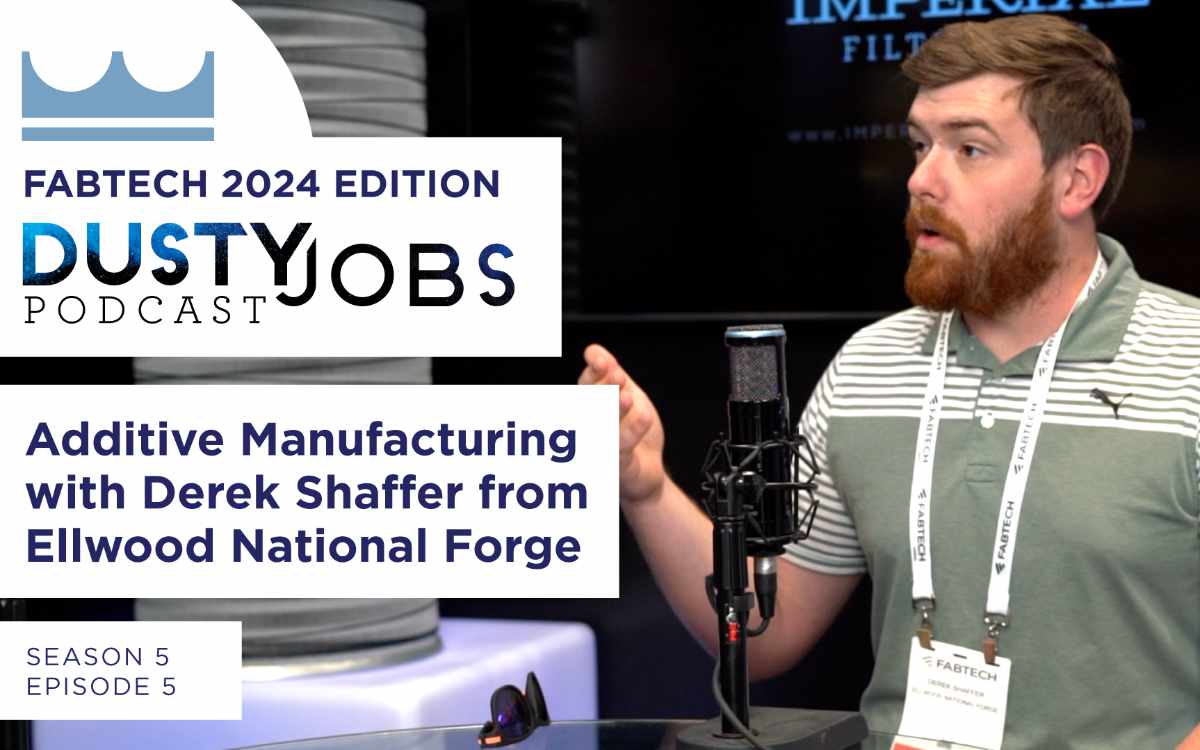We’ve been eager to connect with our lead installer, Ryan Jackman, for some time. We finally had the chance to sit down and discuss the crucial considerations for a successful dust collection installation. Many customers are unsure about the specifics, such as the required size of the concrete pad or whether the installation area is sufficiently clear of obstructions for crane access. Donovan poses these questions to Ryan to provide valuable insights to our customers for their first dust collector or baghouse installation.
Narrator: Welcome to the Dusty Jobs podcast from Imperial Systems. Industry knowledge to make your job easier and safer.
Donovan: Hello and welcome to another episode of the Dusty Jobs podcast. We’re glad to be back in the studio. It’s been a little while since we’ve been in here, but today we got Ryan Jackman with us. Ryan, how you doing, man?
Ryan: Pretty good. How about yourself?
Donovan: Good, good. So Ryan, what is your role here at Imperial Systems?
Ryan:So here at Imperial, I am the installation manager. I manage all the installs that the customer requests from our factory, so factory installs on all equipment.
Donovan: Yeah, yeah, and you’ve been doing that for us four or five years now?
Ryan: About three and a half years, yeah.
Donovan: Three and a half years, yeah. So plenty of experience, have seen tons of problems, issues, good installs, bad installs, and so today we’re gonna talk to you about what we can do to help have installs ready. But before that, I wanna say, now prior to working with Imperial, you did serve in the military, correct?
Ryan:Yes.
Donovan: So you did a little bit of time with–
Ryan: I was in 10 years in the US Navy.
Donovan: Right, so I just wanna say thanks for your service and we really appreciate that. So we’re great to have our veterans. We have a couple veterans that work here with us at Imperial and we’re just glad you’re one of those. All right, but let’s get into this. All right, when we’re talking about installation, right? What is the, what’s the top thing people could have ready for you guys when you show up or ready for themselves if they’re gonna do a self-install? What are the top things you say, have this ready ahead of time and things will go way smoother?
Ryan: So there’s quite a few things. Just off the top of my head, first thing would be site preparation. I mean, where the equipment’s going to be placed, a nice level concrete pad or at least plans to make the equipment level itself in a thorough plan of where you want the equipment to be ran, routed, duct work runs, that kind of stuff. But the biggest thing is site prep. Just having that space to work and to install the equipment.
Donovan: So not just the pad ready, but the space around it you’re saying?
Ryan: Yeah, so like just having room to assemble the equipment ’cause assembling this equipment takes up a lot of space and the more space you have, the easier the install goes.
Donovan: So a typical CMAXX, let’s say we’re on a CMAXX that’s a CM10. That’s like what the dimensions on that’s probably about 20 feet long, 10 feet wide, right? So when you have a piece of equipment that’s around that size, how much area around that area do you need to do work? Twice the size of the CMAXX, three times? What do you look, I mean, obviously, as much as you can get, right?
Ryan: Yeah, I mean, if you could comfortably operate like heavy machinery, like a telehandler forklift, or you can move materials in and out around the equipment along with the equipment being there, it would be plenty enough room.
Donovan: I gotcha, I gotcha. So that’s if we’re doing a ground install. What if we have to put this on top of a building? What are you looking at for that?
Ryan: First off, making sure the building can support the weight of the unit.
Donovan: That’s a really good idea to check with some engineers before we get there. –
Ryan: And then if you’re making roof penetrations or stuff like that, just making sure you have the subcontractors, whoever you’re using, lined up. So once you cut that hole in the roof or you make that penetration, you can go back and close it up.
Donovan: That’s a great point. A lot of times, we don’t do everything that’s needed to be done on the job. There’s points where you need other people to be partner with us in this endeavor, right? And one of them is you set a roof contractor. We’re going through the roof.
Ryan: Electricians or guys that run air lines or really any subcontractor, concrete guys, all that stuff needs to be lined up before you start your install.
Donovan: So the more communication prior to that with other subcontractors, do you see that it tends to help it get a lot smoother, you think?
Ryan: Yeah, so if everything’s planned out in a sequential fashion, everything runs seamlessly. And I can hand off to a sub and he can hand back off to me and we can just keep moving along.
Donovan: Right, we don’t want to be putting the CMAXX up and then trying to pour the concrete, right?
Ryan: Yes, absolutely.
Donovan: So I know one of the questions I get a lot when people are getting ready to do an install is they ask about that concrete pad and they ask how big it should be and they ask how thick it should be. Now, I know for one, we can’t always tell them how thick it should be because how thick you need a pad in Canada could be totally different than how thick you need a pad in Florida. So, but when we’re talking about the size of the pad, okay, and if we give them a footprint of a CMAXX, how much bigger would you want that pad? I mean, obviously as big as you can, but minimum.
Ryan: Yeah, I mean, obviously larger is better. But at a minimum, I would say you’d want at least a foot in every direction larger than the footprint of the equipment.
Donovan: Yeah, and that helps give you guys enough room to…
Ryan: Yeah, that gives enough room so you’re not putting anchor bolts right on the edge of the pad or you’re not side loading the pad and that kind of stuff. And then if you do need a little bit of wiggle room to move the equipment to the left or to the right, a couple inches to miss a structural beam inside, you know, you have that option.
Donovan: That’s a good point. Sometimes you’re looking on the outside, people don’t always think about what’s going on on the inside. So, kind of try to see that project with some X-ray vision if you can when you’re thinking through it. That’s a good thing. Okay, so what are the top things when you get to a job site that people tend to forget? Are there certain things you run into time and time again that you’re like, oh, people forgot about this? What would that be?
Ryan: I would say just, if myself is doing the install as a subcontractor coming onto a customer site, forgetting to relay information when we’re able to work, what kind of safety equipment we have to have while we’re there or is there special regulations we have to follow? Do we have to have extra PPE or something along that lines? Relaying that information ahead of time allows us to plan more on when we can work, how long we can work, who has to be on site while we’re working, just that kind of stuff. I mean, for a customer that’s doing self-install, I mean, if you’re doing a self-install at your own facility, everything’s kind of on you.
Donovan: Right, right. But for you guys, if they’re coming, maybe if you have to have a safety training video ahead of time, that’s good to let you know.
Ryan: Yeah, all that. Anything that takes up time is good information to pass.
Donovan: Right, yeah. Yeah, some places have lockout tagout systems that are different than other ones. Some places have different hot permits or different permits that they need. So all that information being passed to you ahead of time is really gonna help make things go smoother.
Ryan: Yep.
Donovan: Right, well, that’s great. If you had to give someone the top tip other than give you a call and talk ahead of time, right? Which is obviously more communication better, right? What’s the top tip for when you’re putting in a CMAXX? Something that’s just like, maybe something you’ve learned along the way that’s like, oh, if you do this, it makes things go easier.
Ryan: Top tip to customers when you receive initial approval drawings of your system is to review those in detail. Make sure that the equipment that you have allocated to be connected to is where it’s going to be. Make sure that the duct runs are where you want them, satisfactory to your liking. ‘Cause the one big thing we like to avoid is rework. So putting something up and then realizing, oh, that’s not quite how we wanted it. Let’s do it this way.
Donovan: Right, and I’m glad you brought this up because we’re sitting here talking about installing a CMAXX, but here at Imperial, we’ll do the full turnkey system. We can help with the engineering. We can help with all the duct runs. And I know for you, a lot of times, if you can do it, it’s great to, I would say if someone’s out there getting ready to do an install, ask for your salesperson to put a little money in the budget to have you guys come out ahead of time. Wouldn’t you say that’s a big money saver in the end for a lot of people?
Ryan: Oh, absolutely. Yeah, this is what we do every day. So I can walk on site and check out a site and I can tell you 10 things you can do and 10 things you can’t do that you probably wouldn’t have thought about in the first place. Just how our equipment goes together and how it works and what it takes to erect it. So yeah, just reviewing those, taking that time to plan the system out and the engineering and then reviewing those documents before it actually gets fabricated and installed.
Donovan: Right.
Ryan: It saves so much time.
Donovan: And like I’m saying, I think it’s huge. If you can afford it and you can have it to get you and the other guys who are helping engineer this there ahead of time, boy, that’s gonna save a lot of headache in the end from what I’ve seen on a lot of jobs. Because like you’re saying, you’re not going and putting a heater in on the weekends. We’re not playing tulips on the side. We just do this. This is all we do is installation of industrial ventilation systems. That’s it. Everything from our BRF to a CMAXX and those can be very different beasts when we go to put them in. But you’ve done them all.
Ryan: Yeah, yep.
Donovan: So what’s the craziest thing you’ve seen on a site when you’ve got there and you’re like, man, I wish I could have got eyes on this ahead of time.
Ryan: Oh, there’s been quite a few.
Donovan: Go ahead, give us a couple.
Ryan: Showing up to a site and like the customer never relayed that there was overhead power lines directly above where we needed to set equipment. So we had to completely change up how we were gonna erect this ’cause we couldn’t use a crane or anything like that. You know, that plays into a safety factor too. Like the more information you can give about your site. I mean, we can look on Google maps all day, but you can’t see everything.
Donovan: Right.
Ryan: Terrain that your site’s on, just all that stuff helps. You know, other things is we were at a customer’s facility one time and we had to hang large diameter ductwork from the ceiling and come to find out their ceiling would not support that ductwork. So we had to change the whole system and move everything outside and ground some support everything. So just doing your due diligence ahead of time, you know, really plays into it. And that keeps me from having stories to tell when I get back.
Donovan: Well, yeah, I mean, but here’s what I love about your story, Ryan. Typically when we have these stories, it’s not like, and we had to walk away from that. You guys have always found a way to work with the customer and make it right.
Ryan: Yeah, that’s the thing when you’re doing field work, it’s not “can’t”. Can’t’s not an option. It’s how.
Donovan: Right.
Ryan: I got told by a good mentor of mine one time that can’t isn’t an option. You have to figure out how you’re going to do it. So it’s just get it done.
Donovan: Right, right. And I know we’ve said about a hundred times on this already, but the more communication up front, the more information we have at the beginning, the more, the best information we get helps that not turn into having to pivot on these job sites, but it helps it be, have a real clean plan when we come in. And that’s really what we want, right?
Ryan: Yep.
Donovan: So what is the most successful install you’ve had? One where everything just went perfect.
Ryan: I mean, no install is perfect, none of them. There’s always something to fix. There’s always, you know, when you’re dealing with such large systems, there’s going to be something that’s missed, but I mean, one doesn’t stick out on the top of my mind. I mean, every install we do equipment wise goes good. But I would say…
Donovan: There’s not one where you came home and you just said to the wife, you know what, that one went how, I wish they all went like that.
Ryan: Yeah. We did an install in Sullivan, Illinois at AgriFab actually. It was a larger CMAXX, I think it was a CM32 and we were connecting to two laser tables. It’s a frequent customer of ours. We go there quite often. We have quite a few systems there and they know how to work with us. They, you know, we relay information back and forth and that was the one install I think went flawless from start to finish. You know, our collector placement was good and wall entries were fine. You know, it was to equipment we were familiar with and Mazak lasers. So we had the, you know, the diameters of the connections themselves and everything just went smooth. We were scheduled to be there a week, I think. I think we finished it in two and a half days. So that one really sticks out in my mind. There’s been a couple other ones with larger equipment like bag houses, but those were pretty much just equipment only, new duct work. It really starts to get into it when you’re starting to get into buildings and connecting to equipment. That’s where all the little nuances come into play and where people miss things and elevations and.
Donovan: Yeah. But I like the things that you said about your most successful one that you could think of in your mind. It hit all the points that we’re trying to get on, right? That they had their site prepped on ahead of time, right? They were familiar with us, were familiar with them. They understood, we understood what equipment we were hooking up to. They understood what the requirements were of our equipment. And so the number one thing I know for a lot of people out there listening is probably this might be one of the only times they get installed. They might only buy one or two dust collectors, but the more you can learn about Imperial ahead of time, the more we can learn about you, really seems like that’s gonna be the key to having a great install.
Ryan: Yeah. And I’ll say this, we have those one-off customers that we only go to their place one time, but I would say 95% of the time when we’re somewhere, we’re coming back. They’re getting more equipment. We’re gonna be doing more. I get asked all the time to, “Hey, while you’re here, can you come look at this real quick? We wanted to do this.” Our company and our guys are really good about getting the work done and getting it done responsibly and quickly. So, repeat customers is a constant thing for us.
Donovan: Well, that’s great to know too, because if you’re out there and you’re getting a CMAXX and you think you have something else we could help you out with, like Ryan’s saying, he’s more than glad to come and look at whatever you got going on there. Relay that back to the home base here so we can keep serving people well. So, all right, here we go, last thing. Number one hot tip for, if you do this one thing, well, we already said that, didn’t we? It’s have Ryan come ahead of time if you can. That’s the best tip. If we can have someone there on site, have them there.
Ryan: Yeah, and then for self installers, I would say number one is if you have questions, call, ask.
Donovan: True.
Ryan: Don’t assume that you’re doing it correctly. If you don’t think you’re doing it right, call, talk to one of our service techs or our sales guys or anything like that and just call and ask the question. That way you get it right the first time and then when we come out to do the startup, it’s seamless.
Donovan: Yep, yep, so for mechanical contractors or anybody else out there that might be listening to this to do self install, yeah. If it doesn’t go right the first time, have Ryan do it the second time. So, right?
Ryan: Yep.
Donovan: There we go.
Ryan: Always goes easier the second time. So, all right, well hey, thanks for giving us a couple minutes. I know you guys are busy and we can never really even catch you in the office here, but really appreciate it. For everyone else that’s out there listening, like, subscribe, come to all our social media feeds, LinkedIn, YouTube, Facebook, and until next time, stay healthy and stay safe.
Narrator: Thanks for listening to the Dusty Jobs podcast. Breathe better, work safer.




